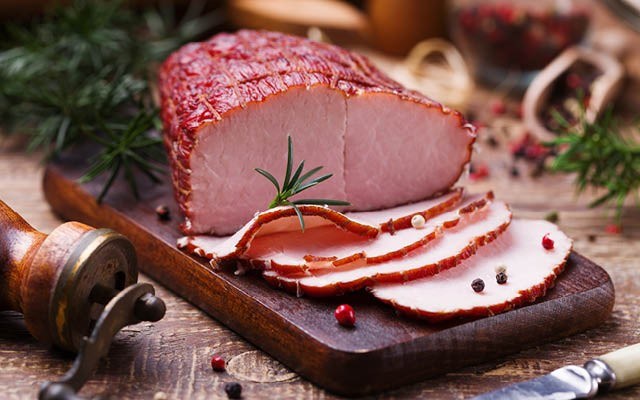It was Easter, and Ruth Reichl, then restaurant editor for the Los Angeles Times, one of the best English-language newspapers around, was staring across the "sad, low landscape" of downtown Los Angeles, wondering how she could make it, meaning Easter, not necessarily downtown L.A., more exciting.
"Holidays are a restaurant critic's nightmare," she writes in the opener to her 2006 best seller, Garlic and Sapphires: The Secret Life of a Critic in Disguise, "and this one, with its perennially boring brunches featuring ham or lamb is particularly gruesome."
Ms. Reichl (pronounced RYE-shill), who jumped to The New York Times before landing the editor's job at Gourmet long before it, ahem, folded, goes on to lament how the column she just wrote on same was, and I quote, deadly.
I ain't no restaurant editor, much less a critic, but I had to laugh when I read that. Though the results might not be deadly or even sad and low — at least I hope they're not! — I'm often challenged coming up with something interesting to write about at Easter. It might have something to do with all that damn ham.
For I asked a bunch of longtime locals and it seems, at least if you grew up in Canada, the traditional Easter centerpiece has long been that intrepid ham. It sounds a familiar refrain even when accompanied by something as exquisite as little homemade chocolates in fondant, shaped like eggs — one for each after dinner — as our own fearless editor, Clare Ogilvie, enjoyed growing up.
Ham with sweet potatoes. Ham with mashed potatoes. Ham with scalloped potatoes. Ham, ham, lovely ham! (D'you feel a Monty Python skit coming on?)
Only Mario Enero, who grew up in Catalonian Spain, moves to a different beat at Easter, one familiar to Italians and Greeks as well: Fish, fish and more fish — hake (merluza) and salted codfish (bacalao) — for Good Friday; whatever you like Easter Sunday, no big deal. Then Easter Monday, baby lamb roasted to perfection (lechazo), something he used to cook over a woodfire and serve at Caramba when it was his.
Beyond that, the best line from my Easter straw poll remains: Definition of eternity? A ham and two people. Ha! That from Cate Webster invoking Irma Rombauer and Joy of Cooking, who was probably invoking Dorothy Parker, who could well have been invoking God only knows, given how long ham has been central to post-colonial America.
"The eternal ham", as Sadie Stein noted a few years back on The Paris Review blog, may well have fuelled colonization itself. Bring a pig — pigs are native to Africa and Eurasia and caused havoc for First Nations and local ecosystems — and you bring tremendous potential.
Hams were even bigger back then. Think of all that perfect, colonial pink meat delivering high-energy calories along with low spoilage given all the smoky, salty curing. Given how little it takes to add flavour and a good dollop of protein to a dish, this enormous ability to stretch meals for rugged homesteaders then and busy homebodies now makes ham the "professional leftover," according to Stein.
But isn't this is a big part of why we love it? Endless leftovers mean meal cruising for days, if not eternity: ham sandwiches; ham and eggs, close relative to spam and eggs; ham casseroles and more. Not gourmet fare — what can you do with all that hammy flavour? — but good fare when all is said and done, and you've still got a big bone left for pea soup, too.
In America, home to the classic country ham, you'll find it in Virginia and Tennessee, the Carolinas, Missouri, Georgia, Kentucky, and more. Here in Canada, ham abounds as well, especially this time of year, though we tend to branch out to European styles like Black Forest.
But all this is changing, too, as traditions do and must.
"Easters were ham for us," notes Cate. "But a big family can use a ham better than just the two of us these days ... so we are going with our new favourite, the smoked bone-in pork chop. First discovered at Margetts Meats in Williams Lake but happy to report that can now find same at Nesters Market in Whistler."
Nesters' manager, Bruce Stewart, grew up with great pumpkin pie and baking soda biscuits — yum! — and pot roast cooked till it was like shoe leather. Pumpkin pie, and ham and turkey, are still big Easter items but he also sees change beyond the chops.
"Today, people have much more discerning tastebuds... Many have moved to fancier cut meats, like prime rib and tenderloin, duck, and many like fish on the bar-b." As for Whistler kids, they're getting Effervé sparkling lemonade instead of milk and, as always, "quality chocolate bunnies up the yin-yang."
Kris Shoup, also a former ham-and-potato gal, has yet another spin: "This year we have a vegan daughter (Rebecca) so will be doing an artichoke and kale dish with other offerings... It is a new world!"
A new world, indeed. An exciting one. With our Lebanese neighbours serving stuffed greens with lamb chops and our Chinese ones fresh asparagus with oyster sauce, Easter dinner options are blossoming.
As for Ms. Reichl, boring times or no, it was right around Easter the call came in offering her the critic's job at The New York Times, an even finer newspaper. Maybe I'll just hang in there for another Easter, and see what surprises pop up in this neck of the woods.
Glenda Bartosh is an award-winning journalist who still enjoys a good Easter ham.




